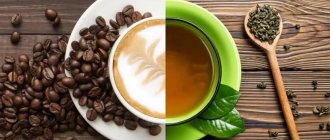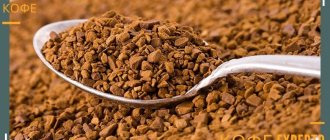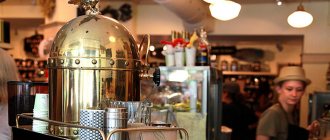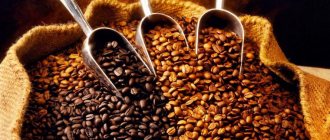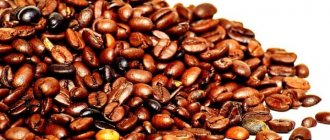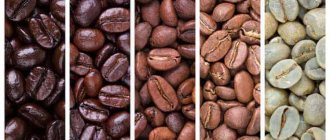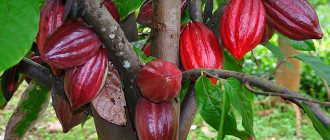Many plants contain organic substances - alkaloids, which play an important role in human life. One type of alkaloid is caffeine, which is found in some drinks and foods. The use of caffeine-containing drinks has become widespread due to the stimulating and tonic properties of the alkaloid. However, large amounts of this substance have a negative effect on the body and can cause many problems. Therefore, some people prefer to replace coffee with a cup of black or green tea in the morning.
Effects of caffeine on the body
Caffeine is an alkaloid that is a psychomotor stimulant of the nervous system, increasing brain activity. When caffeine enters the body, adenosine receptors are blocked, which cause our body to enter a sleepy state, reducing arousal. The caffeine molecule, which is almost identical to the adenosine molecule, can replace it and the opposite effect is obtained for the body.
The tonic properties of caffeine occur due to the breakdown of glycogen, which leads to an increase in blood sugar levels and a feeling of alertness. In addition to its stimulating effect on the nervous system, caffeine has other properties:
- Digestion is normalized due to an increase in the amount of gastric juice secretion;
- blood pressure increases, which is especially important for hypotensive patients;
- relieves headaches due to its effect on the vasomotor center of the brain;
- promotes natural weight loss by increasing the content of free fatty acids in the blood and accelerating metabolism, which forces the body to use fat reserves;
- is a natural antidepressant.
All these positive properties of caffeine appear only when drinking natural drinks, such as coffee or tea, but if we are talking about snacks or soft carbonated drinks, then there is no benefit.
General information about caffeine
It is a purine alkaloid and a psychostimulant. In small doses it has a therapeutic effect, and in large doses it is poisonous.
Caffeine was discovered at the beginning of the 19th century. German chemist Ferdinand Runge. In 1832, its relationship with theine was proven, and its structure was elucidated at the end of the 19th century. This was done using artificial synthesis by the German chemist and Nobel Prize winner Emil Hermann Fischer.
Theine is extracted from waste tea and coffee beans. Industrially, it is synthesized from uric acid and xanthine.
Properties of theine
The molecules of theine and caffeine are identical, but... they can be associated with other elements, the result of their impact on the body is different. An important factor is the breakdown of substances in the human body, which occurs at different rates.
Adenosine regulates various physiological processes in the body. It plays a role in promoting sleep and suppressing alertness. It is also called the "fatigue molecule."
Theine, in turn, interferes with the functioning of the receptors that produce adenosine. Therefore, consuming drinks that contain theine prolongs the period of wakefulness and makes a person feel less tired and drowsy.
Effect on the human body
The effects of theine on people vary depending on their sensitivity to this component. It improves digestion, has a positive effect on the central nervous system and promotes a better supply of oxygen to cells.
Caffeine is contraindicated in case of organic diseases of the cardiovascular system, increased excitability, insomnia, severe hypertension and atherosclerosis.
A healthy effect on the body is maintained only with moderate consumption: in high doses, caffeine can lead to exhaustion of the nervous system, and in more severe cases, to psychosis.
Only moderate consumption of drinks can benefit the body.
Where is there more caffeine in tea or coffee?
Many tea lovers believe that there is practically no caffeine in it, but is this true? Let’s find out.
The tea leaf does not contain truly pure caffeine; it is present in tandem with tannin, forming theine. The latter has a much gentler effect on the central nervous system than caffeine, and its main advantage is that it does not completely turn into infusion, that is, there is much less of it in the drink than in leaves or tea buds. Theine is slowly absorbed into the blood, does not accumulate and is quickly eliminated from the body.
See also: Leaf tea: varieties, how to brew and which one is better
The total caffeine (theine) content in tea, depending on the variety, does not exceed 70 mg per 100 ml of drink.
If we talk about coffee containing pure caffeine, its level is much higher. The caffeine content in coffee depends on a number of factors:
- The type of drink - pure Arabica contains 50-690 mg per 170 ml of drink, but in Robusta this level is several times higher.
- The degree of roasting of the beans - the stronger it is, the higher the alkaloid content, which is why expresso is stronger than other drinks, since dark roasted beans are used for it.
- Natural – instant coffee contains extremely little caffeine.
- Method of preparation - coffee in coffee machines is much stronger than in Turkish coffee.
Thus, the same 100 ml portion of the drink contains: coffee - 50-500 mg of caffeine, tea - 30-60 mg, so the invigorating effect of the latter is somewhat lower.
Drinks that can be replaced
To limit your theine intake and at the same time get an energy boost, you need to consume alternative drinks that have beneficial properties, containing antioxidants and valuable substances:
- Barley coffee. It has digestive, anti-inflammatory and antiseptic properties. It maintains stable blood sugar levels, so it can be taken by diabetics, people suffering from anxiety disorders, and pregnant or breastfeeding women. Contains, although in small quantities, vitamins A, B, E, PP and mineral salts, especially phosphorus and potassium.
- Ginseng. This is the root of a perennial herbaceous plant. It produces a medicine that has been used in traditional medicine for thousands of years. The root counteracts stress and fatigue, improves the response of the central nervous system.
- Chicory. It is one of the most popular natural caffeine-free alternatives. This drink with a characteristic slightly bitter taste is obtained from chicory root. It is rich in polyphenols, inulin (soluble fiber), vitamins and mineral salts, and has digestive properties. In addition, it helps balance intestinal flora and control blood sugar levels.
- Matcha tea. It is a highly prized variety grown in Japan. It is rich in vitamins (B1, B2 and C), mineral salts, polyphenols, chlorophyll and carotene. Helps maintain alertness and is a powerful natural antioxidant.
- Raw cocoa. It is obtained from unroasted cocoa beans. Unlike roasted ones, they are processed at low temperatures and for this reason cocoa keeps all their nutritional properties intact. The powder is lighter than traditional cocoa and is an excellent source of antioxidants. It is rich in magnesium, useful for those who suffer from cardiovascular diseases, as well as athletes, as it prevents cramps and relaxes muscles.
- Golden milk. Used in Ayurvedic medicine. Curcumin, its active and main ingredient, is a powerful antioxidant and natural anti-inflammatory agent.
You can quit caffeine without losing strength and energy. You can add other drinks to this list depending on your preferences.
Caffeine content in different types of tea
Caffeine is contained in any tea, unless, of course, we are talking about herbal infusions, which do not contain a tea leaf or bud. The largest amount of it is in green tea, so it should be given to young children with great caution. It is thanks to the high alkaloid content in the drink that it perfectly invigorates - although the effect does not occur as quickly as when drinking coffee, it lasts longer and causes less harm to the body. Moreover, if there are any additives in the tea, then its strength decreases, so green tea with jasmine or lemon may have less of an invigorating alkaloid.
Many people believe that there is no caffeine in white tea, this is a misconception, its concentration there is lower (5-7 mg per 100 ml) than in black or green tea, but it is still present.
Interesting!
In white tea “Silver Needles”, which has a mild taste, the concentration of theine is very high – on par with green varieties. This is easily explained - the raw material for tea is young, early buds, and they are minimally processed, but Shou Mei white tea, despite its rich color, contains virtually no caffeine.
If you make a rating of invigorating teas, it will look like this:
- Gaba tea is a kind of energy drink. This tea invigorates gradually and completely harmlessly, this is achieved thanks to production technology - the tea undergoes fermentation in the complete absence of oxygen. Thanks to this treatment, the production of GABA acid increases, which contributes to the activation of the central nervous system. This tea is a real find for stress-insecure people.
- Pu-erh - you need to be extremely careful with this tea, because if the brewing technique is not maintained, it will not be a drink, but an energy bomb. It is best to drink this tea before long intellectual work.
- Black tea - it contains up to 60 mg of caffeine, but the effect of black tea does not last as long as green tea.
- Green tea is the leader in caffeine content; there is more of it than in a cup of latte or cappuccino - up to 80 mg per 150 ml serving.
See also: What was the Boston Tea Party of 1773
Oolong tea is not a tea with a high caffeine content - no more than 20 mg per 100 ml of tea, therefore the invigorating effect of tea occurs after a long time and does not last long.
There are also so-called decaffeinated teas, however, it is impossible to achieve a complete absence of theine and a small amount of the alkaloid still remains, but its content is very small, so the drink in large quantities is allowed for people with cardiovascular pathologies.
Thus, green tea contains the most theine - up to 80 mg in a 150 ml serving, the same serving of black tea contains 30-55 mg. However, if you brew green tea according to classical Chinese traditions, the caffeine level is reduced.
Comparison of bagged and loose tea
Mechanical impact on finished tea leaves does not affect the level of alkaloid in them. Chopping and slicing do not increase or decrease the caffeine concentration. In other words, the powder that is used to produce single-use sachets and the whole rolled leaves have the same substance content.
However, from a safety point of view, it is worth giving preference to sheet options. When using loose brew, it is easier to control the saturation of the infusion. It takes at least 4-5 minutes for caffeine to transfer into the drink. When using bags, everything happens faster. The tea is brewed in 1-2 minutes, and the alkaloid instantly turns into an infusion. If you keep the bag in boiling water a little longer, you may get a bitter taste. Just one cup of this drink can cause a spike in blood pressure.
Which tea has no caffeine?
Only herbal and fruit teas contain caffeine. Herbal teas do not have an invigorating effect, so you can safely drink them before bed. Moreover, such teas have a calming and even soporific effect. The raw materials for this tea are:
- chamomile,
- Linden,
- chrysanthemum,
- thyme.
The same can be said about fruit teas; they do not tone, but rather refresh. For their manufacture the following are used:
- rose hip,
- hawthorn,
- apples,
- raspberries.
Fruit teas are an excellent choice for the summer, as they perfectly quench your thirst when chilled.
Where it's not
This alkaloid can be dangerous to the health of the heart and blood vessels, especially if consumed in large doses and constantly. Therefore, for people for whom it is contraindicated, it is better to give preference to decoctions and infusions free from it. Herbal infusions are the best replacement for traditional drinks. For example, chamomile, linden and jasmine. They are perfectly relaxing, soothing and completely harmless. They are good to drink before bed. Doctors advise pregnant women to completely switch to them.
There are no psychostimulants in fruit decoctions that children love so much, so parents don’t have to worry and give it at any time. Rosehip decoction is especially useful.
When choosing an invigorating drink, it is better to choose tea products. It has a gentler effect on the body and has fewer contraindications. Please note that the maximum daily dose of alkaloids is 1 gram. To understand whether your drink contains an acceptable dose, look at the table described above. Try not to abuse strong drinks and often replace them with herbal and flower infusions.
What determines the alkaloid content in tea?
The amount of caffeine in tea depends on several factors:
- Quality of tea leaves - the top leaves contain the most caffeine - 1st pair - 4%, 2nd - 3%, 3rd - 2%. The lowest and oldest shoots contain no more than 1.5% caffeine.
- Degree of fermentation - the less the leaves are processed, the more caffeine they contain.
- Brewing method - the higher the water temperature, the more caffeine is released from the leaves, so by brewing tea with boiling water, we release the maximum amount of caffeine from it, but other beneficial substances may disintegrate.
- Concentration - the more raw materials used, the more alkaloid the drink will contain.
- The presence of flavorings – they reduce caffeine levels by 3-9%.
See also: Chemical composition of tea, what is contained in tea
Thus, when choosing tea, you should always pay attention to all the factors that influence its strength.
Varieties of tea alkaloids
Back in the first half of the 19th century, scientists isolated a new alkaloid from tea leaves, called theine. An analogue of this substance is matein and guaranine, contained in mate and gauran leaves, respectively.
The combination of theine with other elements found in the tea plant makes this substance slightly different from caffeine.
A little later, when studying other plants, caffeine was obtained. Having studied their composition, scientists came to the conclusion that these substances have the same properties. Over time, all alkaloids obtained from these plants began to be called caffeine.
Tannins contained in tea leaves slow down the absorption of theine into the blood. And the presence in the plant of microelements such as polyphenol and antioxidants inhibits the development of cancer cells.
Daily caffeine intake
In order to avoid harm from drinking tea, it is important to know the permissible amount of caffeine. It is 400 mg per day, that is, if a cup of green tea contains about 70 mg of caffeine, then you can drink no more than 5-6 cups of tea per day. However, it is important to remember that this norm is applicable for a healthy person; for people with pathologies of the heart or nervous system, this dose is much lower.
Signs of exceeding the norm, harm
Despite all the positive aspects, caffeine can also be dangerous for the body. The dangers of regularly consuming caffeine-containing products are as follows:
- possible heart rhythm disturbance;
- the nervous system is exhausted
- dehydration occurs due to the diuretic effect;
- exhaustion of the adrenal glands, due to the “rush” of metabolism,
- has a laxative effect,
- the absorption of magnesium is impaired and the level of acid in the stomach increases, which can lead to peptic ulcers,
- promotes “leaching” of calcium from bones,
- contains acrylamide, which is a carcinogen,
- causes heartburn.
Caffeine poses the greatest danger to people with cardiovascular pathologies, since its effect not only stimulates the contraction of the heart muscle, but also the center of the vagus nerve, which leads to malfunctions of the heart muscle. Large doses of the drink can lead to arrhythmia.
If any unpleasant sensations occur after drinking the drink, such as irregular heart rhythm, dizziness, headaches or stomach pain, then tea should be excluded from your diet and consult a doctor immediately.
Decaf tea drinks
If you want to eliminate caffeine from your life, then pay attention to the following types of teas - they do not contain this substance at all:
- Herbal - tea made from mint, chamomile, lemon balm, fennel, fireweed and other herbs perfectly calm, heal and have many other beneficial properties. You can brew them all together or separately - the taste will always be at the highest level.
- Berry - it turns out that berries are good for more than just compote. Tea made from rose hips, sea buckthorn, black currant, strawberries and other berries will fill your life with positivity and unusual taste. Be sure to try it.
- Rooibos is a drink that is obtained from the fruits and leaves of a shrub that grows in Africa. It can be combined with anything, but it’s healthier and tastier - with orange and mint. Also, it is ideal for pregnant women.
